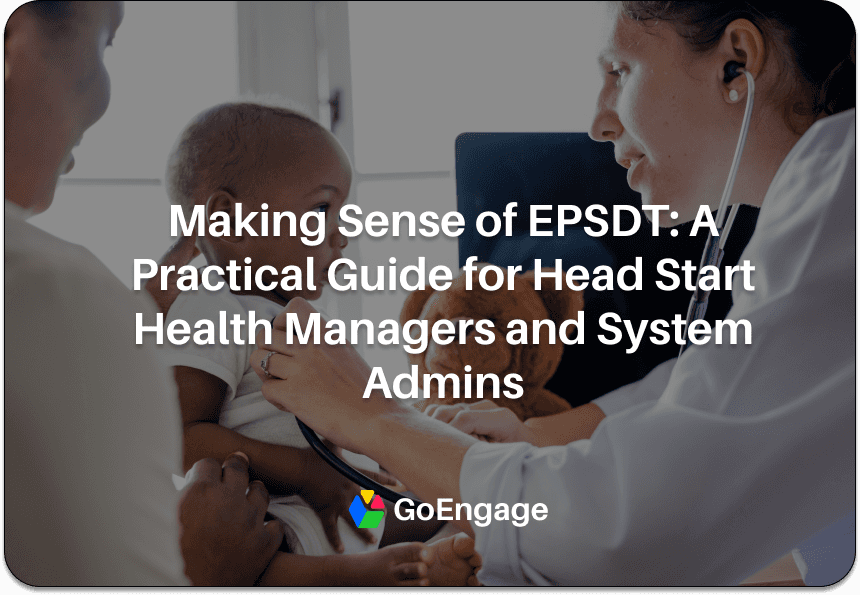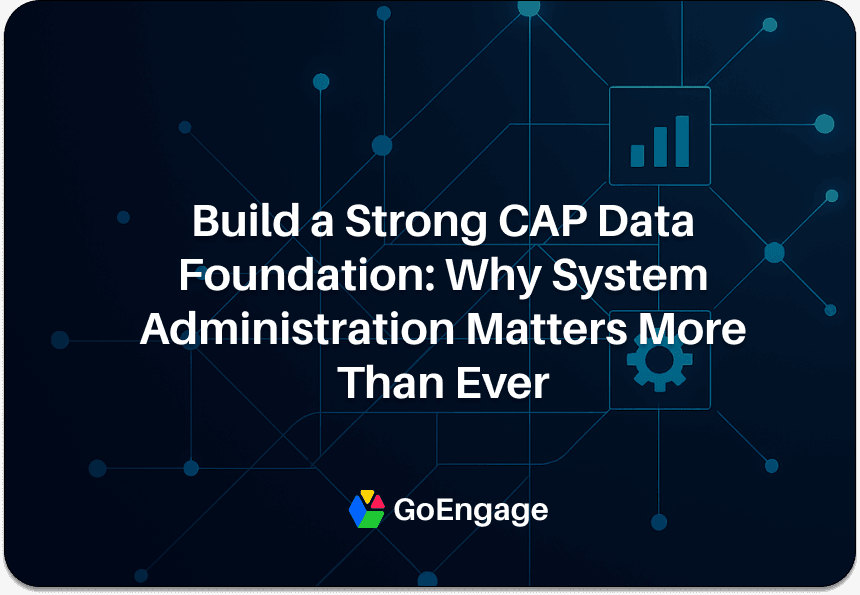The 2025–2026 Head Start PIR Checklist: What’s New, What’s Next, and Why It Matters
As Head Start programs prepare to navigate a new program year, one document stands as both a regulatory requirement and a powerful organizational tool: the Program Information Report (PIR).
The advance release of the 2025–2026 PIR presents more than a regulatory update — it offers programs the opportunity to move from reactive compliance to strategic alignment, ensuring data not only satisfies federal reporting but fuels meaningful decision-making. This year's changes are more than formatting updates — they signal a broader evolution in how Head Start captures, defines, and reports impact.
The Broader Context: Why This PIR Update Matters
Every year, the PIR evolves — and the 2025–2026 version does more than tweak fields or update deadlines. It reflects a shifting landscape in early childhood education, especially around equity, access, and data transparency.
For leaders guiding Head Start and Early Head Start systems, PIR is not just data collection — it's strategic positioning.
This time, it brings:
Broader eligibility categories and income flexibility
Modernized racial/ethnic identity representation
Clearer language for educators and administrators
Curriculum and screening tool updates that match today’s learning environment
These changes go beyond surface-level adjustments. They represent intentional, strategic enhancements aimed at more accurately reflecting the needs and complexity of the families Head Start programs serve. They also mirror a broader federal momentum — from the Office of Management and Budget’s equity policies to an expanding focus on regional affordability, cultural responsiveness, and inclusive eligibility frameworks.
For organizations that can pivot early, this is an opportunity to:
Streamline internal systems
Strengthen program narratives
Build cross-year data continuity for deeper analysis
What’s New: Leadership-Level Changes to Prioritize
Eligibility Redefined
Programs may now document income-based eligibility adjustments due to excessive housing costs (A.15).
Two new eligibility categories were added:
Migrant/Seasonal Head Start: agricultural employment-based eligibility (A.13.g)
AIAN Programs: service-area-based eligibility (A.13.h)
These additions signal a greater emphasis on contextualizing need, not just verifying it.
Identity Data Modernization
Aligned with OMB Directive No. 15, race and ethnicity data is now collected in parallel fields, enabling individuals to be counted across multiple racial/ethnic identities.
This is a critical enhancement for tribal programs, multilingual families, and service equity tracking.
Instructional Integrity
Revised curriculum fields include widely-used, evidence-based tools such as Tools of the Mind, Core Knowledge Preschool Sequence, and The Gee Whiz Curriculum.
Dropdown enhancements across sections C.29–C.31 improve reporting fidelity and program comparability.
2025–2026 PIR Readiness Checklist
Use this checklist to ensure your program is fully prepared to collect, verify, and report the required PIR data — while accounting for these key changes.
1. General Preparation
Review the full 2025–2026 PIR Form and Change Highlights document
Download guidance and reference materials from the PIR Resource Hub
Identify staff responsible for each PIR section (Program Info, Staff, Child/Family Services, Grant Level)
2. Eligibility & Enrollment
NEW: Track eligibility for:
Migrant/Seasonal families based on agricultural employment (A.13.g)
AIAN families within approved service areas (A.13.h)
NEW: Document housing cost adjustments for income calculations (A.15)
Validate eligibility documentation for all enrolled children and pregnant women
Review use of over-income and 130% poverty allowances under 1302.12(c–d)
Ensure cumulative and funded enrollment are accurately categorized by source
3. Demographic Reporting
NEW: Report race and/or ethnicity as multiple, equal-value categories (A.26, A.27, B.13, B.14)
Ensure your internal systems can capture multiracial and multiethnic identities
Verify data for language, home language, and dual language learners
4. Program Options & Attendance
Review and categorize all enrollment slots by program type:
Center-based
Home-based
Family child care
Locally designed options
Confirm attendance tracking meets PIR definitions (during program year, not calendar year)
Document transitions, turnover, and child outcomes per program type
5. Curriculum, Screening & Assessment
NEW: Update internal dropdowns to include the 20+ newly listed curricula:
Beautiful Beginnings, Tools of the Mind, The Gee Whiz Curriculum, etc.
Ensure screening and assessment tools align with revised naming conventions (C.29–C.31)
Document fidelity to curriculum and observational tools used
6. Staff & Qualifications
Validate staff counts by role and education level
Confirm use of updated terminology:
“Bachelor’s” instead of “Baccalaureate”
“Advanced” degree includes master’s or doctoral
Check salary data by education level (B.11–B.12)
Capture turnover and language abilities of staff accurately
7. Family & Community Engagement
Verify family service outcomes (job training, father engagement, housing assistance)
Accurately report homeless and foster care support provided
Confirm data on parent education and number of families served
8. System & Submission Checks
Use HSES validation tools to catch errors before final submission
Prepare to report by August 31, 2026 or as soon as your program year ends
Store documentation to support reported values for audit or federal review
Optional — GoEngage Optimization
If using GoEngage:
Map 2025–2026 PIR fields to your internal data sources
Run pre-submission validations and error checks
Export directly to HSES-ready file format
GoEngage tip and best practice: Monitor your PIR data all year long. Leadership and management should use the Snapshots feature in Agency PIR to save snapshots on a recurring basis for comparison over time. If activated for your program, staff can use My PIR as a personal report card. Monitor the progress and completeness on a regular basis to support cleaner data, faster corrections, and more accurate reporting.
👉 Learn more about PIR tools in GoEngage.
Turn Compliance into Capacity with GoEngage
For executive teams, aligning to the PIR shouldn’t just be a compliance task. It should be a catalyst for institutional insight.
GoEngage is the trusted platform that helps leadership teams:
Connect day-to-day service delivery to federal reporting logic
Build staff confidence with guided PIR preparation workflows
Automate validation, error detection, and field mapping
Generate fully HSES-compatible exports — clean, compliant, and audit-ready
For complex, multi-site programs, GoEngage also supports role-based access, real-time collaboration, and API integration with third-party data systems.
👉 Learn more about PIR tools in GoEngage.
Leading with Insight
Ultimately, the PIR is as strong as the systems that support it. Programs that build data capacity before deadlines are more agile, more adaptive, and more effective in telling their story.
As you guide your team through the 2025–2026 transition, remember: compliance is just the floor. Strategic alignment is the ceiling.
Learn how GoEngage can strengthen your PIR infrastructure and drive long-term performance improvements.
Share this article:

By
Stacy Lewis: Senior Director of Business Development at Cleverex Systems
Stacy Lewis is the Senior Director of Business Development at Cleverex Systems, the creator of GoEngage. A trusted leader in the Head Start software space since 2001, Stacy brings over 24 years of experience, including key roles at ChildPlus, KinderSystems (COPA and California subsidy products), and Learning Genie, before joining GoEngage.
Throughout her career, Stacy has helped countless agencies optimize operations, enhance family engagement, and achieve compliance with federal and state standards. Her extensive industry knowledge and commitment to innovation continue to drive transformative solutions that empower Head Start programs to better serve children and families.




